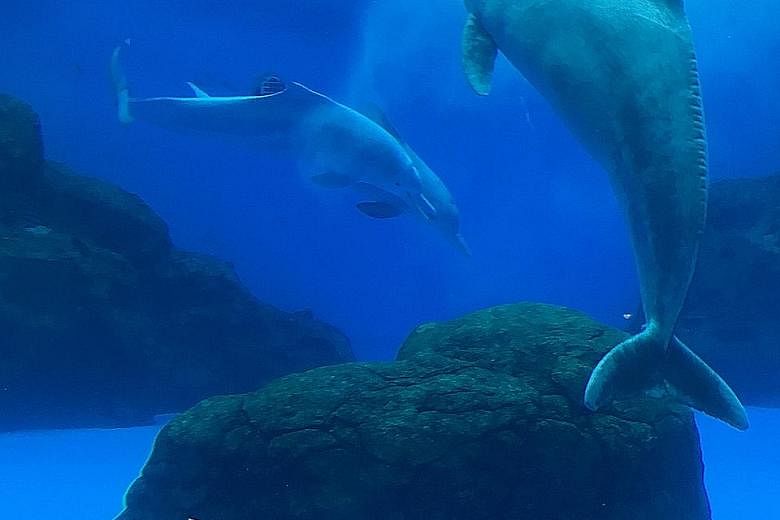Two of the seven pink dolphins previously housed at Underwater World Singapore (UWS) never left the country, contrary to claims by the attraction that all its aquatic animals had found new homes in regional facilities.
Trade data published last month by the Convention on International Trade in Endangered Species of Wild Fauna and Flora (Cites) - an international agreement between governments to regulate the wildlife trade - showed that only five live pink dolphins (Sousa chinensis) were exported last year.
The pink dolphin is listed in Appendix I of Cites, which spells out species threatened with extinction.
Permits are required from the local authorities before animals on this list are traded. In Singapore, these permits are issued by the Agri-Food and Veterinary Authority (AVA).
UWS, an aquarium on Sentosa, closed last June after 25 years when its lease expired.
The attraction's main stars were its seven Indo-Pacific humpbacked dolphins or pink dolphins, which were named Eaung, Pann, Splish, Splash, Jumbo, Han and Speedy.
On June 5 last year, UWS sent five of them, three fur seals and five otters to Chimelong Ocean Kingdom theme park in Zhuhai, China.
Han, which had skin cancer, and Speedy were not among the five.
But in April this year, a spokesman for Haw Par Corporation, which owned UWS, told The Straits Times "all the other aquatic animals also found suitable facilities to be rehoused and were safely transferred out of the UWS premises to various regional facilities by end-October 2016". The spokesman declined to name the facilities.
When approached then, AVA also declined to specify the number of permits issued to UWS, citing organisational confidentiality. Its spokesman would say only that it worked with UWS to rehome all the aquatic animals in aquariums abroad.
When queried on the export data earlier this week, the Haw Par spokesman declined to comment.
AVA, however, confirmed with The Straits Times yesterday that it had issued five export permits to UWS to facilitate the rehoming of live dolphins overseas as indicated in the Cites trade database.
But the AVA spokesman stressed that its role is to ensure Cites-listed animals are imported and exported according to the Convention. "When these animals are in Singapore, their custodian (in this case, UWS) would be responsible for ensuring the care and welfare of these animals," she added. "There were no animal welfare issues detected when the dolphins were under the care of UWS."
Earlier this year, international marine conservation group Sea Shepherd visited the China facility on multiple occasions to monitor the five dolphins sent from Singapore, but found only four on display: females Eaung and Pann, as well as Pann's two calves, Splish and Splash.
Sea Shepherd said workers at the China park gave differing accounts of the missing dolphin, Jumbo.
One claimed it was kept in an off-site research facility, and the other insisted there were only four dolphins left. UWS did not comment on the Sea Shepherd report then.
Ms Jaki Teo, Singapore's representative for Sea Shepherd Asia, said: "These... creatures are treated as mere commodities, and facilities are allowed to operate with appalling lack of transparency."


